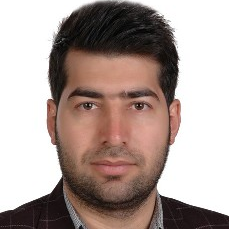Geocomputation Using Remote Sensing Techniques under Data-Scarcity Conditions
A special issue of Remote Sensing (ISSN 2072-4292). This special issue belongs to the section "Remote Sensing Image Processing".
Deadline for manuscript submissions: closed (15 April 2022) | Viewed by 4157
Special Issue Editors
Interests: environmental sustainability; geospatial modeling; watershed management; natural disasters
Special Issues, Collections and Topics in MDPI journals
Interests: remote sensing; watershed modeling; climate change impact; sediment dynamics; river basin management
Special Issues, Collections and Topics in MDPI journals
Interests: regional and global hydrology and water resources issues; sustainable urban and rural development and adaptive land-use planning for decision support; vulnerability assessment to water-related disasters and conflicts; nature-based solutions
Special Issue Information
Dear Colleagues,
Geocomputation includes real-time monitoring, spatial data analysis, spatial modeling, simulation, space-time dynamics and virtual reality. It focuses on using various different types of geographical, geological, and environmental data and developing relevant tools within the overall context of a computational scientific approach. Remote sensing techniques enhance the geocomputation approach through providing a wide range of satellite images with different capabilities. Remote sensing techniques such as object-based image analysis along with spatial modeling procedures play a key role in geocomputation domains for understanding complex geo-environmental phenomena. For instance, synthetic aperture radar can be a valuable tool for disaster management including pre-event and postevent countermeasures, owing to its quick response, large coverage, noncontact, and independence of light and weather capabilities. In addition to data-scarcity conditions, it is difficult and sometimes highly risky to conduct field surveys for the entire influenced areas in a short time after a natural disaster. Remote sensing can observe and acquire information quickly over a wide field. In the decision-making and problem-solving processes, the performance of geocomputation procedures is limited when huge datasets are processed. These large-scale geospatial problems may not be processible using traditional methods. This challenge is exacerbated when analyzing complex geohazard phenomena such as floods, landslides, ground subsidence, debris flows, gullies, and snow avalanches. Change detection approaches in disaster assessments can also provide valuable information in geocomputation processes. Therefore, application of artificial intelligence branches including machine learning and deep-learning algorithms can support data analysis and geospatial computation. Developing novel and efficient methods for improving geospatial computation and modeling are increasingly required to achieve high-performance solutions.
Dr. Omid Rahmati
Prof. Dr. Assefa M. Melesse
Prof. Dr. Zahra Kalantari
Guest Editors
Manuscript Submission Information
Manuscripts should be submitted online at www.mdpi.com by registering and logging in to this website. Once you are registered, click here to go to the submission form. Manuscripts can be submitted until the deadline. All submissions that pass pre-check are peer-reviewed. Accepted papers will be published continuously in the journal (as soon as accepted) and will be listed together on the special issue website. Research articles, review articles as well as short communications are invited. For planned papers, a title and short abstract (about 100 words) can be sent to the Editorial Office for announcement on this website.
Submitted manuscripts should not have been published previously, nor be under consideration for publication elsewhere (except conference proceedings papers). All manuscripts are thoroughly refereed through a single-blind peer-review process. A guide for authors and other relevant information for submission of manuscripts is available on the Instructions for Authors page. Remote Sensing is an international peer-reviewed open access semimonthly journal published by MDPI.
Please visit the Instructions for Authors page before submitting a manuscript. The Article Processing Charge (APC) for publication in this open access journal is 2700 CHF (Swiss Francs). Submitted papers should be well formatted and use good English. Authors may use MDPI's English editing service prior to publication or during author revisions.
Keywords
- artificial intelligence
- geocomputation
- sustainable development
- digital earth
- geo-environmental modeling
- natural disasters
- natural resources
- ecosystem services
Benefits of Publishing in a Special Issue
- Ease of navigation: Grouping papers by topic helps scholars navigate broad scope journals more efficiently.
- Greater discoverability: Special Issues support the reach and impact of scientific research. Articles in Special Issues are more discoverable and cited more frequently.
- Expansion of research network: Special Issues facilitate connections among authors, fostering scientific collaborations.
- External promotion: Articles in Special Issues are often promoted through the journal's social media, increasing their visibility.
- e-Book format: Special Issues with more than 10 articles can be published as dedicated e-books, ensuring wide and rapid dissemination.
Further information on MDPI's Special Issue polices can be found here.







